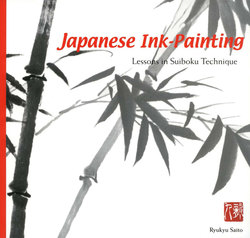Читать книгу Japanese Ink Painting - Ryukyu Saito - Страница 7
На сайте Литреса книга снята с продажи.
ОглавлениеPreface . . .
BY SHIZUYA FUJIKAKE
Mr. Ryukyu Saito is an old artist friend of mine. In 1914 he graduated at the top of his class in Japanese art at the Tokyo School of Art, and in 1927 went abroad to the United States to continue his studies. At that time, I was on a world trip studying Japanese and world art, for which purpose I had gone from the United States through Europe and India. Since Mr. Saito was such a master of the brush, he was very warmly welcomed in the United States.
In 1927, when he was invited to take part in the New York Gallery combined exhibition of Japanese artists who were in the United States at that time, he showed some important works. President Schneider of the University of Cincinnati sent him an invitation through Dr. Tashiro, a professor of Japanese art, to come to the university. Mr. Saito was unable to accept the offer that year, having to return to Japan in 1928, but promised to come to America once again. However, the president died almost immediately after this, and unfortunately the plan never materialized.
Then Mr. Saito had an idea. He formed an International Art Association and devoted himself to acquainting foreigners with the spirit and special characteristics of Japanese art. As a result, foreigners of many different nationalities living, in Japan came to know something about the techniques of suiboku, of which Japan can be justly proud. Acquiring a considerable reputation, he received many requests from people who wanted to study with him, and up to the present time, he has had more than 500 students. Ryukyu himself deepened his own insight as a result, and sinking himself completely in suiboku, he decided to stand before the world as a suiboku artist. As Ryukyu says, "My feeling about the strange mysteriousness of suiboku, which is a unique form of Oriental art, is this: that what one does is express intimately and freshly the beauties of nature by means of the distinctive qualities of the sumi and the brush and their relation to the paper. Trying to express the sense of color by means of the operation of the sumi and the brush, I have thrown myself completely into suiboku, with the intention of boldly and freely transforming the great world of nature into pictures."
He has had several individual shows of his suiboku paintings and he has resolved to devote his entire life to this form of art, Therefore he takes great pains over every single item that he paints. He is now making a collection of his works that will serve both as a souvenir and as an opportunity to trace his development.
His many students have asked him time and time again to gather his beginning lessons together and put them into book form for the benefit of those who cannot study under him. I think this is an extremely good idea. I am giving all of my support to this undertaking, and I feel that this book will fill that need, as well as interest many others who have not yet heard of suiboku.
Tokyo, 1958
